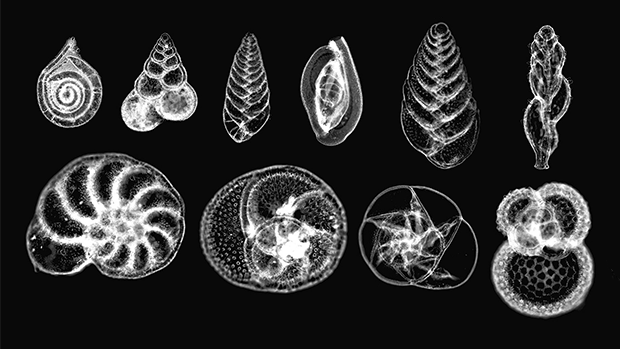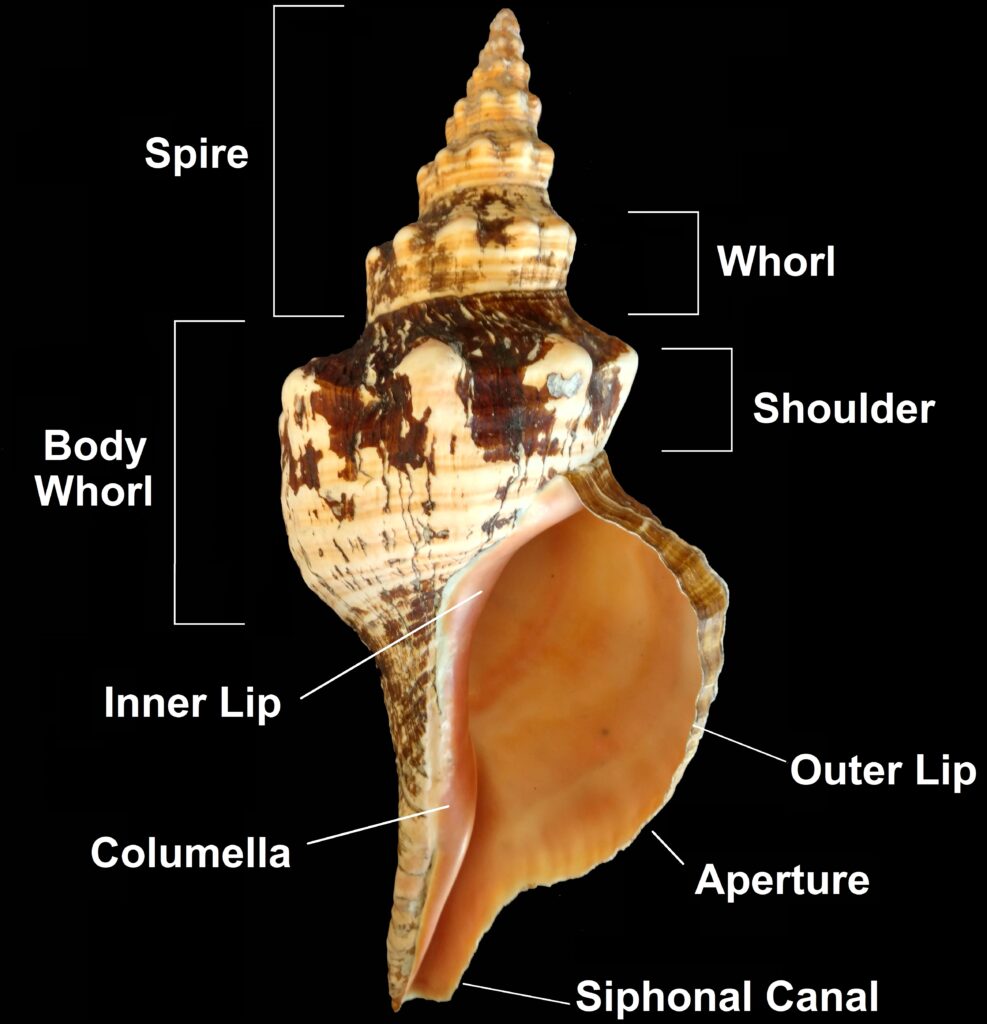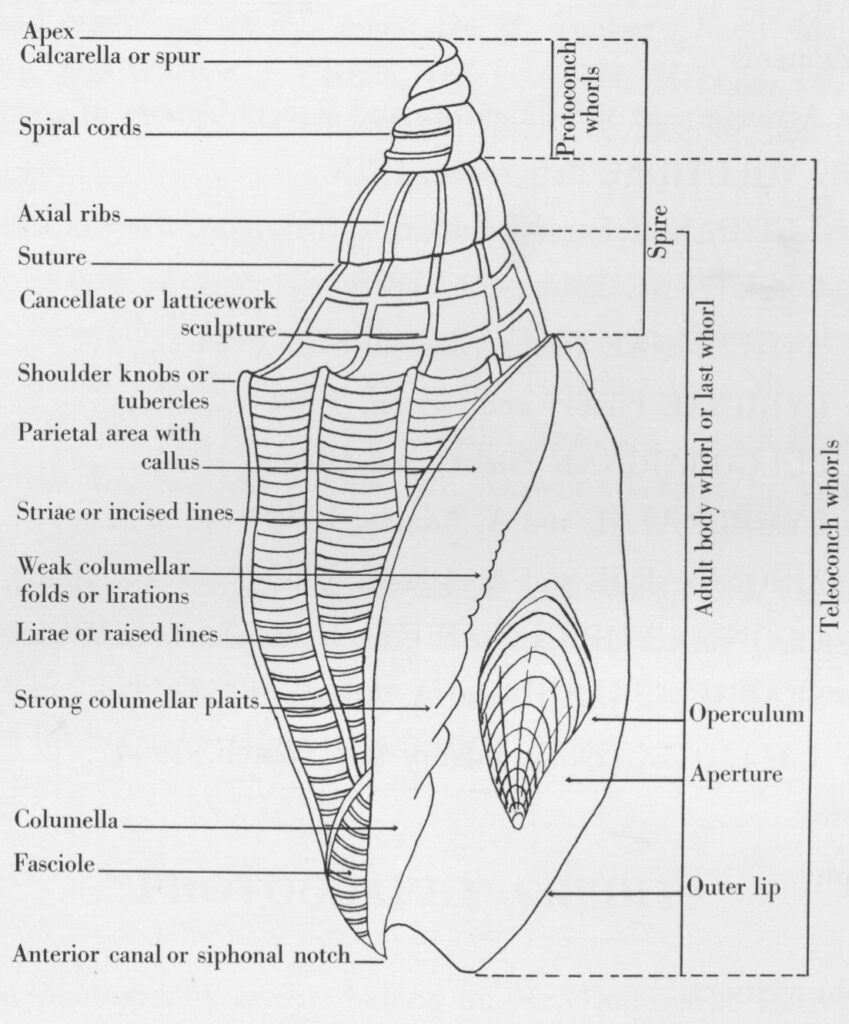Shell Anatomy
Diagrams depicting typical gastropod anatomy with the elements of the shell labelled.
Important Vocabulary
- Calcium carbonate (CaCO3): The material most shells are made out of, created from calcium and carbonate that organisms pull from the seawater.
- Calcite and Aragonite: Two different forms of calcium carbonate that are commonly found in shells.
- Chitin: A strong, natural polymer used in plant cell walls and the shells of crustaceans.
- Conchiolin: Provides the internal base of the shell, made of chitin and protein.
- Mantle: A soft wall that encloses the body of a mollusk and secretes materials to form the shell.
- Extra-pallial fluid: The fluid secreted by the mantle that contains the ingredients to form calcium carbonate.
- Growing edge: The edge, or lip, of the shell that calcium carbonate is laid down at so the shell can grow.

How do mollusks build their shells?
Shells are made of calcium carbonate, CaCO3, so the first step in shell creation is the absorption of these mineral ingredients from the environment; marine mollusks acquire these materials directly from seawater. These chemical components are stored in the mantle of the organism, which is the region that is responsible for secreting the extra-pallial fluid that contains calcium carbonate. In order to begin building the shell, a layer of conchiolin is secreted, which is made of protein and chitin and provides a solid base for the rest of the shell. On top of this, the mantle draws the necessary chemicals from the extra-pallial fluid and begins to build the calcium carbonate shell.
The calcium carbonate can take two forms, calcite or aragonite, which have the same chemical composition but in different arrangements. The calcium carbonate is typically laid down at the growing edge of the shell, but the shell can also be thickened by adding layers on the inside of the shell cavity. A small amount of protein also exists in the shell, which helps in making its structure strong yet light. While the details of shell building are still being studied, with this basic framework a highly diverse array of structures and forms are created.
Learn More
Scientific American on How Seashells (and Turtle Shells) are Formed

